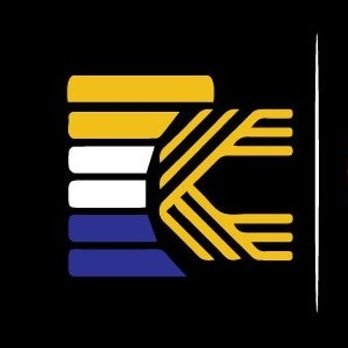Saylor: Bitcoin’s Utility Drives Its Price Swings — What’s Next for BTC?
Despite the market volatility and the instability of the economy, Michael Saylor has again voiced his opinion regarding the inherent value of Bitcoin (BTC). According to Saylor , BTC price fluctuations are not a drawback at all. He firmly believes that the digital currency’s utility is the one and only factor that leads to the fluctuations.
“Doesn’t mean it’s correlated long-term—just means it’s always available,” Saylor said in response to questions over its stock-like behavior.
Bitcoin trades all day, every day. Unlike traditional assets, it never sleeps. That availability opens it up to sharper market reactions, especially in times of panic. But Saylor believes these moment-to-moment fluctuations don’t undercut its deeper value. Long-term, the dips don’t dent the core.
Dave Portnoy, known for his love of meme coins and market antics, had questioned why Bitcoin often moves in sync with the US stock market. He argued that for a supposedly independent asset, Bitcoin sure does mimic Wall Street’s mood swings. That observation sparked Saylor’s latest defense of Bitcoin’s character.
Saylor’s recent remarks came just after he compared Bitcoin favorably to physical commodities like gold. He pointed out that Bitcoin has a serious advantage—it’s untouched by tariffs. As Donald Trump’s new wave of tariffs on imported goods shakes up markets, Bitcoin, immune from such rules, stands apart.
These tariffs, introduced as a tit-for-tat against foreign policies, have stirred fresh economic uncertainty. They’ve added pressure on commodities already under strain. In this context, Bitcoin’s lack of physical form and borderless nature offer a unique shelter, a feature Saylor is keen to highlight.
According to Arthur Hayes , ex-CEO of BitMEX, the imbalance and the increased volatility are the main reasons why the Bitcoin surged. Hayes claims that the situation would cause the governments to print more money to cover the distortions they have initiated themselves, thus getting the investors to come on board with Bitcoin.
For him, a fall in the Dollar’s value and the disinvestment in tech stocks by foreign entities are contributing to a stronger Bitcoin mid-term prospect.
Back in August 2020, Strategy, previously known as MicroStrategy, made its debut into Bitcoin. The trend has been fully aligned from that moment. Right now, Strategy has 528,185 BTC, which makes it the largest corporate Bitcoin holder globally. Moreover, Strategy is one of the most recent convertible bond issuers and has raised around $9 billion.
Saylor’s conviction in Bitcoin hasn’t wavered. On March 15, 2025, he posted a tweet that drew attention far and wide.
Bitcoin is an Orange Dwarf—the brightest object in the financial system—growing stronger, hotter, and denser as it attracts capital.
Orange dwarfs are very constant and enduring like the idea of Saylor for Bitcoin. The analogy was liked by the crypto community, which showed a sense of not just standing through the change but increasing in spirit.

TopCryptoNews
2025/03/10 22:25
🔴 Why Is #Bitcoin Crashing Today?
Bitcoin’s price has left many investors confused after it dropped below $84,000. Despite strong bullish factors over the past week, its recent price movement is far from the high expectations set by analysts following the announcement of the Strategic Bitcoin Reserve.
Bitcoin is currently trading at $80,909, down over 6% in the past day. Bitcoin has dropped 3.37% over the past week, with trading volumes down 53%. Despite the declining figures, Bitcoin whales are actively buying, accumulating more than 22,000 BTC in just three days.
Despite a week full of positive news, including the signing of an executive order for a Strategic Bitcoin Reserve, a Crypto Summit at the White House, and encouraging statements from the OCC, Bitcoin’s price is unexpectedly falling and could drop below $80K.
An analyst expressed surprise, saying that in his 8 years with Bitcoin, he never seen the price action so out of sync with the news. This week was one of the most bullish in Bitcoin’s history, yet the market is facing decline.
Several factors are behind Bitcoin’s recent price drop. Macroeconomic issues, like new tariffs from the US, have sparked sell-offs in Bitcoin and other cryptocurrencies. Besides, the release of the non-farm payrolls (NFP) report on Friday suggests that the Federal Reserve might tighten monetary policy, which could hurt Bitcoin’s price.
Experts noted that while the executive order for a Strategic Bitcoin Reserve and the Crypto Summit were positive, the lack of concrete policies might have cooled investor enthusiasm.
Bitcoin’s decline is also dragging altcoins down, with ETH, XRP, and BNB losing over 6%, 6% and 4% respectively in the last 24 hours.
#BTC

Cryptonews Official
2025/03/08 10:45
BNB Chain sets Mar 20 for Pascal hardfork on mainnet
BNB Chain’s upgrade brings better EVM compatibility and developer flexibility and will go live on the mainnet on March 20.
BNB Chain ’s Pascal hardfork, an upgrade set to bring several enhancements to the blockchain network, will deploy on the mainnet this March. Per an announcement , this upgrade should be going live in about two weeks’ time — specifically, it’s on March 20.
The mainnet activation of the latest BNB Chain upgrade follows the BNB-powered blockchain’s testnet release of the hardfork in February 2025 ( BNB ). While the developer team initially highlighted a tentative mainnet launch date of mid-March, the team is now looking at March 20, 2025.
Pascal offers Ethereum ( ETH ) Virtual Machine compatibility via the improvement proposal EIP-7702, which allows externally owned accounts to execute smart contracts code. This means wallets can act as smart contracts that allow for gasless transactions, batch approvals, and swaps.
Pascal introduces EVM compatibility with the same features that Ethereum is eyeing with the Pectra upgrade . With its upgrade, Binance’s blockchain network eyes improved user experience and easier web3 onboarding as decentralized applications sponsor gas fees.
Ahead of the Pascal hardfork, node operators and validators, exchanges and infrastructure providers as well as developers need to update. This is to ensure compatibility, as failing to update could see participants out of sync post-mainnet upgrade.
BNB Chain’s next steps after the Pascal update include two key milestones in network speed. These are via the Lorentz hardfork expected in April 2025 and the Maxwell hardfork earmarked for June 2025.
Lorentz targets faster blocks at 1.5 seconds, while the Maxwell upgrade would see BNB Chain’s transactions at sub-second finality with 0.75 seconds.
These are key upgrades as BNB Chain targets traction across decentralized finance and artificial intelligence. A recently unveiled AI roadmap reveals as much.
Notably, the intersection of DeFi and AI has sprouted the rapidly expanding ecosystem of DeFAI, bringing opportunities from AI and blockchain. It includes benefits in the optimization of yield generation, cross-chain intelligence, and liquidity management.

Coinfomania_
2025/03/06 19:50
White House Shocks Crypto World: David Sacks Backs Repeal of the IRS DeFi Broker Rule
In a historic development, the White House has indicated its support for the repeal of the IRS DeFi broker rule. The December 2024 regulation, which defined “broker” to include decentralized finance (DeFi) platforms and subjected them to strict reportage requirements, has been faulted for stifling innovation and intruding into people’s private lives. The administration’s approval is in sync with congressional efforts led by Senator Ted Cruz and Representative Mike Carey to repeal the regulation. The decision is a policy pivot towards DeFi regulation, balancing the imperative of compliance and taxation and supporting development in this sector.
Congressional Pushback and Industry Response
The crypto industry, accompanied by friendly legislators, organized a collective front to challenge the IRS’s regulation of DeFi brokers. The Blockchain Association, which has over 75 actors, implored Congress to cancel the regulation in February of 2025, terming it a regulation overreach. Senator Ted Cruz submitted a resolution under the Congressional Review Act (CRA) to cancel the regulation, which he asserted was outside congressional intent and could stifle innovation in the DeFi market. The move in Congress was a sign of the growing political strength of the cryptocurrency market and its potential to mobilize in defense of perceived regulation overreach.
White House Approval of the Repeal Efforts
White House Crypto and AI Advisor David Sacks, in a big move, has declared that it strongly supports congressional repeal of the IRS DeFi broker rule. The administration is in agreement with concerns that the regulation can suppress American innovation and is also concerned with privacy in that taxpayers’ private data has to be disclosed. The administration’s decision to lend its support is one of balancing compliance and facilitating development in the DeFi sector. The decision is in harmony with champions in the sector, and this is one step towards more mature regulation in the rapidly evolving digital asset sector.
A Pivotal Moment for DeFi Regulation
The approval of the CRA resolution for the repeal of the IRS DeFi broker rule by the White House is a milestone in regulating decentralized finance (DeFi). It underscores the necessity of implementing a policy that is mindful of the unique character of DeFi platforms but not excessively burdensome in compliance. The move of the Senate to bring this resolution to a vote has significant implications for future regulation of America’s DeFi. Success in repealing could pave the way for targeted regulation that encourages innovation while making compliance easier and ensuring consumers are protected. Failure to repeal could foreshadow stricter regulation, which could slow the development of the DeFi ecosystem.
Navigating the Future of Crypto Regulation
The debate on the repeal of the IRS DeFi broker rule is reflective of the integration of regulation and innovation in the crypto sphere. Tax compliance is necessary, but regulations should not go to the point of stifling emerging technologies. The expression of White House approval of the repeal of this regulation is in line with recognizing there is a call for a well-crafted policy to facilitate growth while ensuring public interest. The future of digital assets is unfolding, and policymakers now find themselves having to design structures that can regulate innovation while not undermining regulatory purposes.
The end product of this legislative process will serve as a lead for future regulation of cryptos in America and how America can capitalize on decentralizing technologies. It is necessary to achieve this harmony in order to ensure America continues to remain in its position of preeminence in financial innovation and to ensure investors’ and consumers’ interests. The ongoing interaction of policymakers and industry experts will be part of designing a regulatory environment conducive to compliance and innovation.
The post White House Shocks Crypto World: David Sacks Backs Repeal of the IRS DeFi Broker Rule appeared first on Coinfomania.
ORDER-11.39%
PEOPLE-11.00%

BGUSER-1P5XDQ85
2025/03/05 23:05
Recent price moves make one thing clear: The U.S. holds the key to crypto’s 2025 trajectory.
The recent panics hasn't ended the bull run, and I believe another round of rally is on the way.
Crypto’s fundamentals are rock solid, adoption is up, institutional bags are getting heavier, real-world use cases are expanding, and above all, Bitcoin’s long-term value is intact.
So why does the market still feel like it’s walking on eggshells?
Because crypto isn't just an isolated degen playground anymore. With the U.S. government and Wall Street institutions now in the game, it’s now a heavyweight player, moving in sync with U.S. policies, macroeconomics, and political shifts.
Yes, Asia is accelerating adoption, Europe is implementing MiCA regulations, and institutions are deploying capital.
But let’s be real. The U.S. is still the biggest variable. With Trump’s shifting policies (e.g. tariffs) and institutions adjusting to the evolving regulatory landscape, short-term instability is inevitable, but it won’t kill the cycle.
Debt and liquidity are long-term drivers. The U.S. will ultimately need to devalue debt, and Bitcoin remains one of the best anti-debt, anti-inflation hedges out there.
The bull run isn’t over, but how fast (or slow) we send this cycle will depend heavily on U.S. policies and liquidity conditions.


 最低價
最低價 最高價
最高價 










































